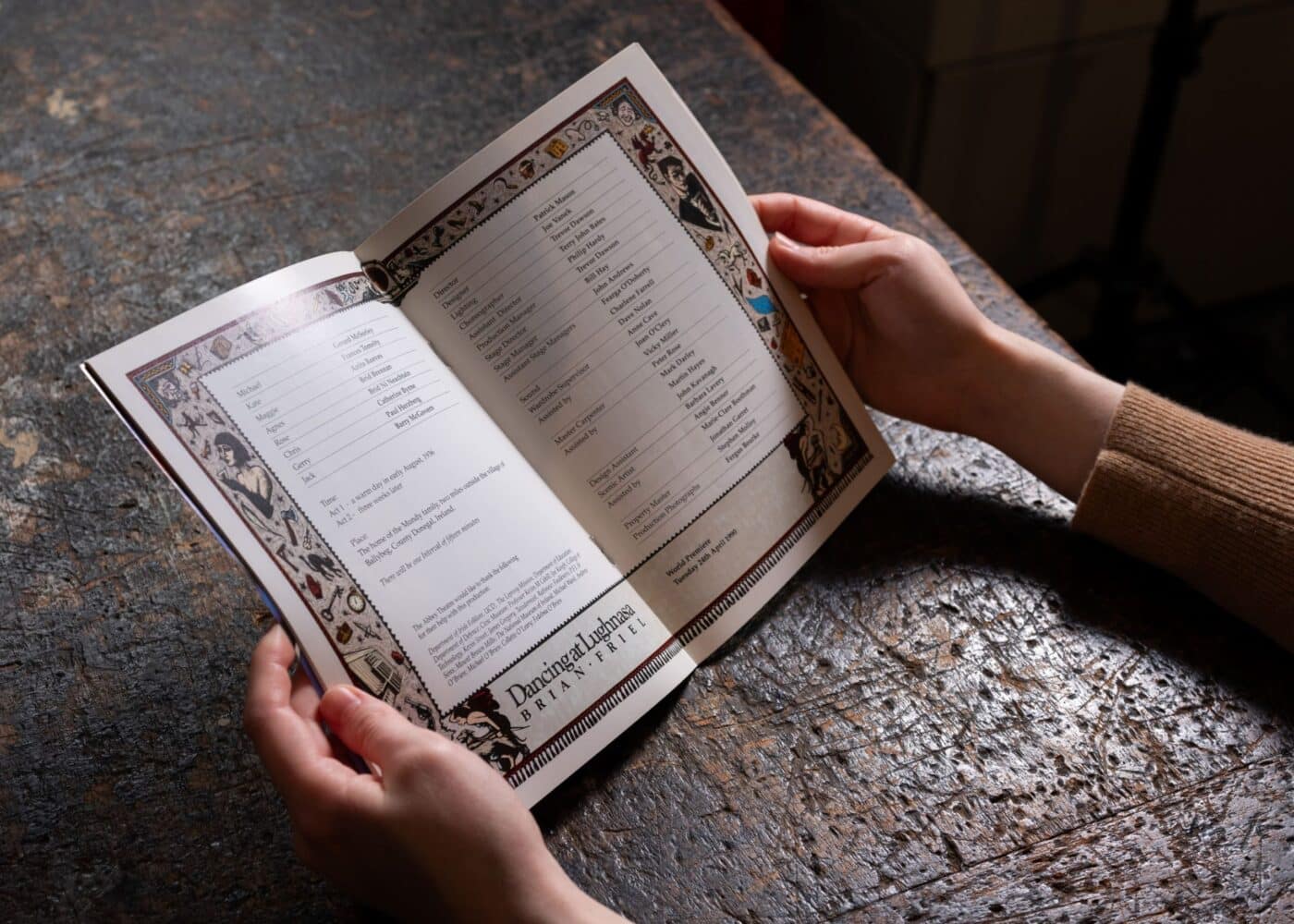Dancing at Lughnasa Programme from the Abbey Theatre (1990)



Since ancient times, theatre has been both a form of entertainment and a medium for addressing current concerns. This is especially true for twentieth-century Irish theatre, which gave voice to social issues and asserted new kinds of national identities. As Ireland’s national theatre, the Abbey Theatre played host to many of the century’s most significant works.
First opened in 1904 by members of the Irish literary revival, its early shows featured the work of writers such as W.B. Yeats and Lady Gregory. It began receiving state funding in 1925, becoming the first national theatre in the English-speaking world to do so. As the decades progressed the theatre would open itself up to a variety of local and international work, from Irish-language shows to classics like Shakespeare.
The National Print Museum holds a number of items from the Abbey Theatre, including a programme from the premiere of notable playwright Brian Freil’s Dancing at Lughnasa on April 24th, 1990. The cover itself is striking, bordered by illustrations depicting a variety of items, from a horned helmet to the Devil himself. Two renditions of Queen Maeve and her wolfhound, a symbol used by the theatre since its opening, flank the bottom of the cover. Inside, the programme gives details about Brian Friel, the cast, and the production crew. Background information is also provided on the ancient pagan Lughnasa festival, which inspired the play’s name. The performance is introduced with a short essay by author Michael Etherton. He aptly wrote that through the work, Friel ‘offers us a vision of growing up/old as Irish, Catholic, European, in a very wide world’.
One of the many plays written by Brian Friel, Dancing at Lughnasa is set in a fictional town in Donegal during the 1930s. It traces the struggles faced by five unmarried sisters in a changing world, whose experiences of social ostracization, failing relationships, and loss of work see their lives grow less and less hopeful. Inspired partly by his own upbringing, Friel draws attention to the ways that individuals remember the past, as the narrator recalls these events from his childhood.
Through this work, Friel reflects on the social impact of change and modernization within a rural family, all while commenting on the religious and political conservatism of the period. Other themes addressed within the play, such as unemployment and emigration, also resonated within the present day. Premiering before the Celtic Tiger took hold, Ireland itself was on the cusp of dramatic change.
The play was incredibly popular during its first run at the Abbey Theatre. Not long after, it appeared in London and New York, winning several Tony awards in the process. Since then, it has been presented by different theatre companies across Europe, and a film adaptation was even released in 1998. It featured most recently at London’s National Theatre in the spring of 2023. Now, Dancing at Lughnasa is considered to be Brian Friel’s most popular work.
Friel is now immortalised through this play and the many others he wrote, having passed away in 2015. But the Irish theatre tradition that he contributed immensely to continues today, and the Abbey Theatre remains a site for viewing the latest Irish theatrical talent. The next time you find yourself at a play, consider yourself part of Ireland’s rich theatre history. It is the very timelessness of theatregoing that makes it so remarkable as a leisure activity!